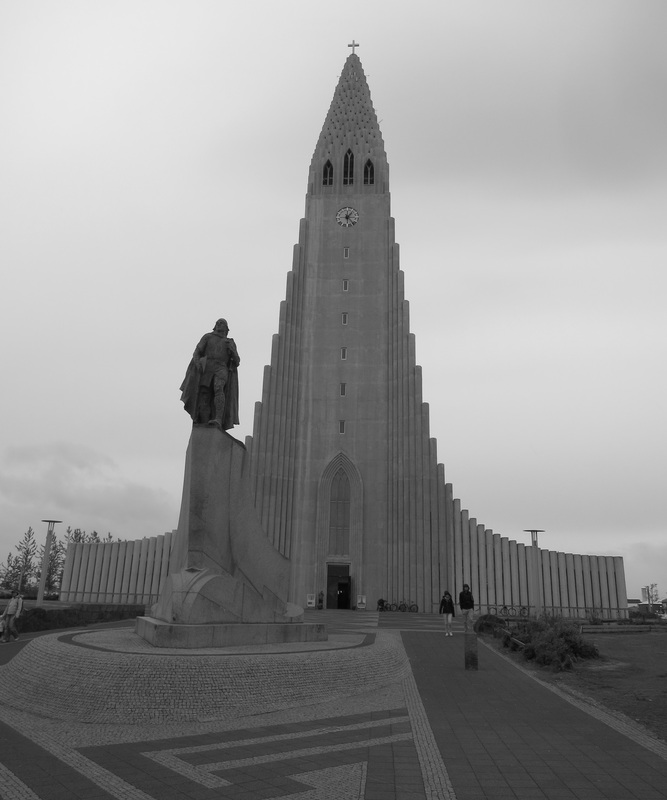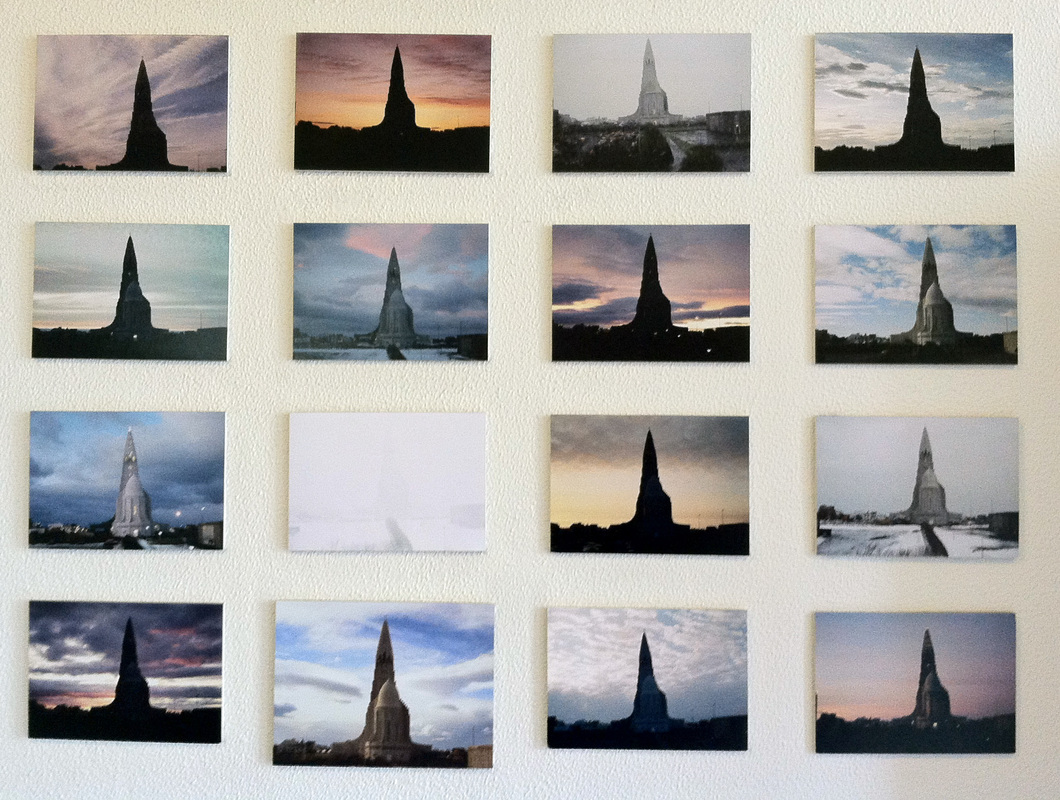Contemporary Icelandic Art
Hallgriskirkja church, Reykjavik, Iceland
The Hallgrímskirkja church, designed in by state architect Guðjón Samúelsson, in 1937, is the tallest building in the city of Reykjavik. Sitting high on a hill it defines the city skyline and provides tourists such as my self a welcome reference point to in which to navigate the city. The church, designed to reference the lava flows which built the island up from the sea, is an example of expressionistic architecture. After doing a little research on this, I learned that expressionist architecture gives freedom to the architect to express individualistic identity but does have some common attributes:
The church itself struck me as a great example of art and architecture responding to the environment and the everyday experiences of the artist and the intended audience. The interior structure of the church was classical in many ways but there was a clear modernistic approach to the design. There was very little ornamentation and what there was was either figurative or nature oriented. The real work of art is the building up of an integral experience out of the interaction of organic and environmental conditions and energies. |
“The Sun, the Moon, the Earth and its contents, are material to form greater things, that is, ethereal things—greater things than the Creator himself made. –John Keats (1) |
Beating Time Bell Tower Installation
Sited in the bell tower of Hallgriskirkja church, is an installation by American artist Jo Yarrington. As if being in a bell tower high above a city wasn't enough of an experience, Yarrington's installation added another layer to that experience. As you look through the affixed photographic images to the city and sea below, there is an intermixing of imagery. Sky imagery layers over city, and sky over sky. The colors changed as the hue of the interior lighting of the tower mixed with the changing sky.
From the artist: "I have chosen to affix photographic images, taken on Iceland’s Outer Ring road this past summer, in which I am holding and looking through quotidian (commonplace) objects toward the sun. These images seemed to address the micro/macro aspect of the individual search toward an understanding of the universal or cosmic. In the images, one sees only the hand, the object, the sky, and the sun. The images selected and affixed to these segmented windows will reference early 20th century photographer Eadweard Muybridge’s sequenced action photographs of a conductor’s hands (also entitled “Beating Time”), and the evangelical basis of Hallgrimskirkja Lutheran doctrine while also giving a contemporary and real life aspect to the work by incorporating photographs of the congregants of the church." 1. Dewey, J. (2005). Art as experience. New York, NY: Perigee
2. Kvaran, D. O. (2001). Confronting nature: Icelandic art of the 20th century. Reykjavik: National Gallery of of Iceland. |
This angle on nature could easily be associated with someone flying over the island. The yearning to leave home in order to return with a new perspective is a recurrent leitmotif in Icelandic fiction from the middle ages to the present day. Young Icelandic artists who have spent a long time in other countries see their homeland in a certain sense with a foreigner’s eyes. Their “second” eye comes from abroad, and, like the pioneer painters, this is the perspective of some who has left and returned. -- Audur Ólafsdóttir (2) While Jo Yarrington is not from Iceland, the choice of choosing an artist for a specific site installation must take in many considerations including an ability to see from both a foreigner's eyes and "as if" one were looking from within. I find the idea of "seeing" ones identity from both inside and outside particularly intriguing and I think that might be true of many artists who work in the realm of personal and public identification.
For in architecture as in painting and poetry, raw materials are reordered through interaction with the self to make experience delightful. -- John Dewey (1)
| ||||||


